In the 2021 NFL draft, Trey Sermon was drafted with the 88th overall pick by the San Francisco 49ers, joining Jerick McKinnon and Kenyan Drake among active running backs in the NFL from Cobb County.
The question is, who will be next?
The number of potential possibilities appears to be dwindling.
Among the 176 total players from Cobb County who are currently listed on Division I college football rosters ahead of the 2022 season, just eight are running backs, with two being incoming freshmen.
Among them are juniors Jordon Simmons (McEachern) at Michigan State, Keyon Henry-Brooks (Kennesaw Mountain) at Louisiana Tech and Nate Hope (east Cobb native) at Coastal Carolina, along with sophomores James Ziglor (Harrison) at Vanderbilt, Kimani Vidal (Marietta) at Troy and Marquis Ledet (Osborne) at Kennesaw State.
Joining the six experienced Division I players are a pair of 2022 graduates — Walton’s Sutton Smith (Memphis) and Sprayberry’s Isaiah Abbey (Harvard).
Sprayberry coach Brett Vavra said one of the reasons for the low number of running backs in Division I is because of the shift of offensive schemes in college football.
“Offenses have changed to spread the ball a lot more,” Vavra said. “You’re putting one running back on the field at a time and not two or three like back in the old days. People get power-I or wishbone, and all that stuff just doesn’t happen anymore because of the style of football played these days.”
Many college programs have shifted away from run-dominated offensive schemes, with fewer and fewer schools using option-oriented offenses. Among the most notable programs to use option-oriented offenses are the military academies (Army, Navy and Air Force).
The academies led the Football Bowl Subdivisions in rush attempts in 2021, with Air Force (834), Army (758) and Navy (694) finishing first, second and third, respectively.
Kennesaw Mountain coach Caleb Carmean said while there is still a place for traditional-style running backs, the versatility of the position is becoming more and more important in the college recruitment process.
“College offenses are so different,” Carmean said. “You still have Army, Citadel, Navy and those schools who need that old-school, 4-yards-and-a-cloud-of-dust kind of guy. But the majority wants that guy who can catch the ball out of the backfield and who can be extremely exotic as far as what you can do with him.”
As for the Football Championship Subdivision, Kennesaw State employs a run-heavy, triple-option offense led by coach Brian Bohannon. Prior to taking the Owls’ head-coaching job, Bohannon had served as an assistant on Paul Johnson’s option-based teams at Georgia Southern, Navy and Georgia Tech.
Under Johnson’s tutelage, Bohannon constructed a spread option offense of his own.
However, even under Bohannon’s offensive system, he said the recruitment process remains the same at the position, with there being a draw for versatile running backs who can play across the field.
“Other offenses haven’t changed how we recruit running backs or any other position,” Bohannon said. “Tough players that can run and catch will always fit our offense. We are looking for recruits that fit our system based on specific qualities, regardless of style of offense they played in high school.”
Last season, Kennesaw State finished atop the FCS with 728 team rush attempts, 50 more than FCS champion North Dakota State, which played two more games than Kennesaw State.
The Owls also finished ranked third in the FCS in total team rushing yards (3,622), behind North Dakota State (4,209) and Davidson (3,701). They also finished third in the FCS in yards per game (278.6), behind Davidson (336.5) and North Dakota State (280.6).
Among the 15 running backs on Kennesaw State’s roster for 2022 is Ledet, who earned all-Cobb County honors his junior and senior seasons.
Carmean said colleges may not even be looking at those who played the running back position in high school, but those who are the most athletic.
“I think more and more colleges are just taking the most athletic available,” Carmean said. “They may not necessarily be a high school running back that goes and plays college running back. It may be that guy who’s a quarterback and is super athletic.”
One of the most notable cases from the county is McKinnon, who was originally recruited to Georgia Southern as a quarterback under coach Jeff Monken, another Johnson disciple. During his time with the Eagles’ triple-option offense, McKinnon finished his career with 4,138 all-purpose yards and 42 touchdowns.
McKinnon was drafted as a running back in the third round of the 2014 NFL draft by the Minnesota Vikings and is now with the Kansas City Chiefs.
After McKinnon’s final season at Georgia Southern, Monken left to take the head-coaching position at Army, where he remains and continues to use the triple-option.
Walton coach Daniel Brunner said that it is important for running backs to be versatile with today’s offense, especially at the collegiate level.
“There’s only one running back on the field typically, and if there is, they’re going to move them all over the place,” Brunner said. “That’s really what I think set a kid like Sutton apart was that he could do it all. He could flex out and play receiver, he can be in the slot, he can line up in the backfield. Versatility is one of the biggest pieces.”


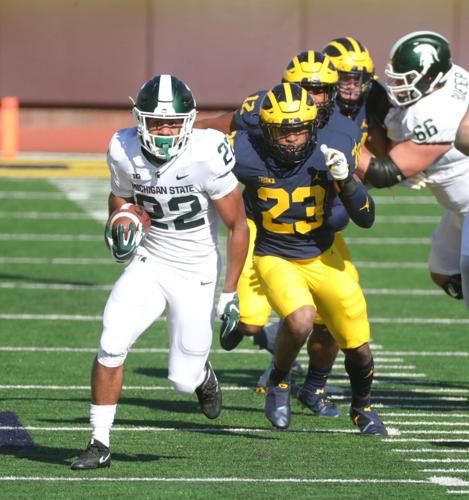
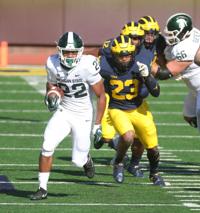
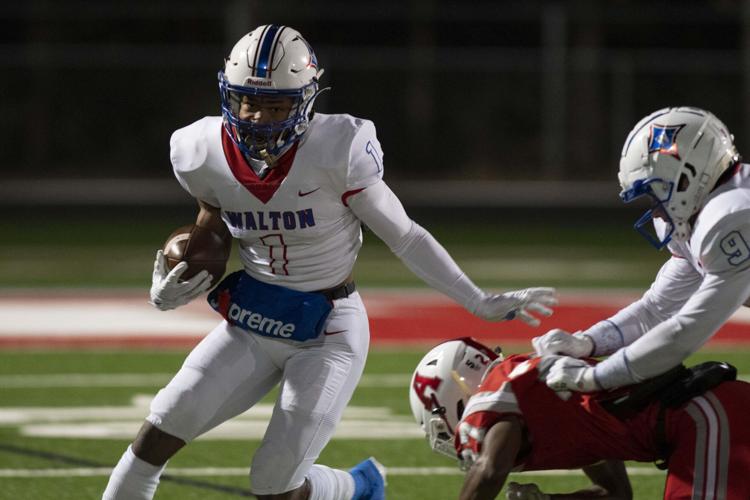
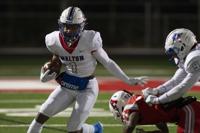

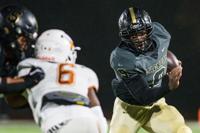






(0) comments
Welcome to the discussion.
Log In
Keep it Clean. Please avoid obscene, vulgar, lewd, racist or sexually-oriented language.
PLEASE TURN OFF YOUR CAPS LOCK.
Don't Threaten. Threats of harming another person will not be tolerated.
Be Truthful. Don't knowingly lie about anyone or anything.
Be Nice. No racism, sexism or any sort of -ism that is degrading to another person.
Be Proactive. Use the 'Report' link on each comment to let us know of abusive posts.
Share with Us. We'd love to hear eyewitness accounts, the history behind an article.